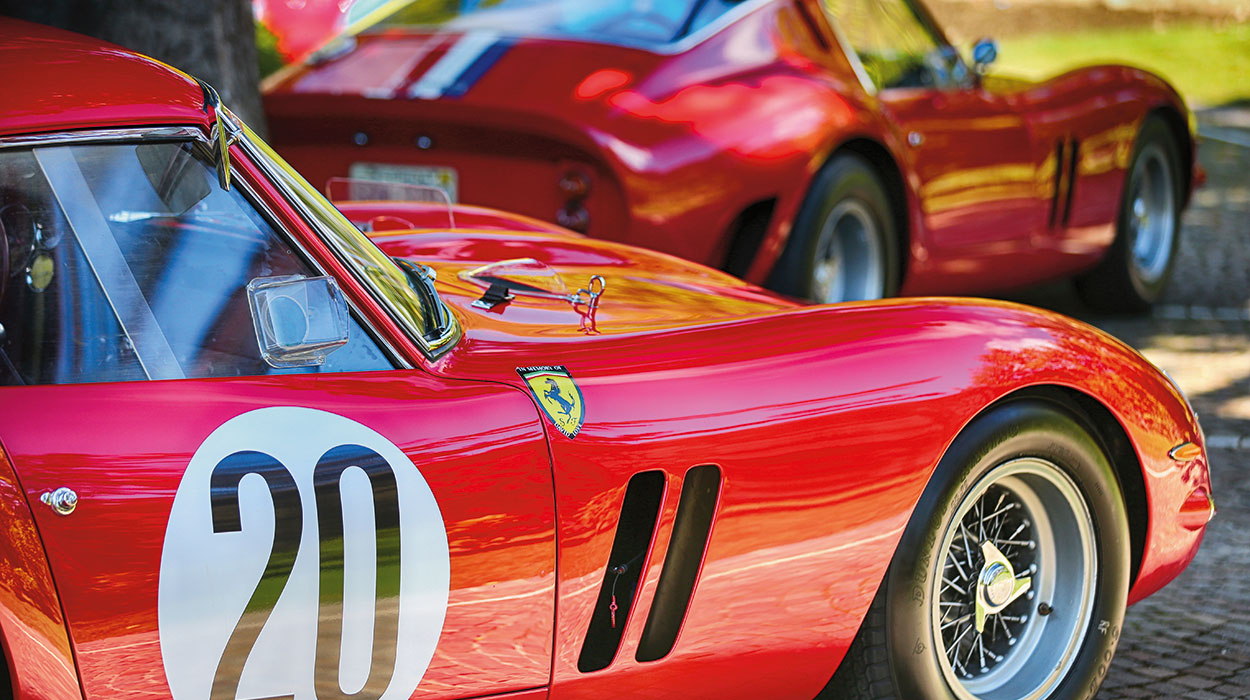#luxury #automotive #Ferrari #innovations #aerodynamics
$RACE
“Controlling the way air flows over, under and around the car is a core part of Ferrari’s mission”–Paul Ebeling
Airflow is Key to cooling engine components and dispelling heat, but also a force to be manipulated to deliver high speed handling stability.
Automotive design has always been entranced by aero. In the late Twenties and early Thirties, car designers became entranced with the idea of ‘stream-lining’. This led to cars influenced by aviation, with sleek fuselages and slippery teardrop shapes designed to minimise drag.
But this was only part of the equation, and it wasn’t until the early Sixties that Ferrari’s pioneering engineers really got to grips with concepts such as downforce.
The 1st spoiler, as we now know it, appeared on the epochal 250 GTO, the ‘O’ standing for ‘omologato’ in recognition of the process though which it was conceived. Engineering wizard Giotto Bizzarrini led the car’s development, initially reworking a 250 GT into a prototype he called Papera. Although he left Ferrari in late 1961, Enzo Ferrari tasked Sergio Scaglietti with completing the work, along with a young engineering prodigy called Mauro Forghieri. There would be more from him later…
Although not present on the cars shown to the media on 24th February 1962, the GTO’s rear end would soon evolve to include a ‘Kamm’ tail, according to principles laid out by German aerodynamicist Wunibald Kamm; he discovered that abruptly cutting off the tail not only maintained airflow and minimised drag, it also reduced lift and created a low pressure zone. As far as the GTO was concerned, the results spoke for themselves: the car dominated sports car racing, with successes in the Targa Florio, in the Tour de France, and at Le Mans. It was as functional as it was beautiful.
Talking spoilers, perhaps the greatest of them all is the one that graces the body of the Ferrari F40 – not least because it’s integral to the entire look of the car. Indeed, the F40 is practically one big aero device, arguably the definitive performance car of the Eighties, and certainly one of the most uncompromising Ferraris ever made.
The engineer Nicola Materazzi proposed the project to Enzo Ferrari, building on the work done on an Evoluzione version of the 288 GTO. The F40 was developed in a little over a year and with a singularity of purpose that was fitting, given that it was the last new Ferrari to be done under Enzo’s watch.
Designed by Pininfarina, the body used carbon fibre, Kevlar and aluminium in its construction. The twin-turbo V8 generated a lot of heat, so the lightweight rear screen had louvres. And then there was that huge rear wing. ‘We threw ourselves headlong into the work,’ Pininfarina’s chief designer Leonardo Fioravanti recalled. ‘Extensive research at the wind tunnel went into aerodynamic optimisation, to achieve co-efficients appropriate for the most powerful Ferrari road car ever. Its style matches its performance: the low bonnet with a very tiny overhang, the NACA air vents and the rear spoiler, which my colleague Aldo Brovarone placed at right angles, made it famous.’
Aero devices, of course, come in all sorts of shapes and sizes. On the 599 GTB Fiorano, the striking rear buttresses were originally more of a design motif from the guys at Pininfarina, until a Ferrari aerodynamicist discovered that they created a vortex of air over the rear that generated downforce without increasing drag.
This was taken to new levels on the 599 GTO, whose design benefitted specifically from experience in F1 and the XX programme. The width of the ‘wake’ generated at the front was narrowed to reduce drag, and a splitter diverted the air flow to the rear of the car; its geometry ensured that the flow always separates at the same point to maximise efficiency.
It’s not always about spoilers. Other recent aero highlights include the 458 Italia’s deformable ‘aeroelastic’ front winglets, and even more so the active aero features that characterize its hardcore sibling, the 458 Speciale. It can adopt different configurations according to whether it’s generating downforce in cornering or reducing drag on straights. The Speciale also gained distinctive turning vanes either side of the front bumper, little aero fins ahead of the rear wheels to increase downforce, and a redesigned rear spoiler with a larger surface area.
The journey continued on the F8 Tributo, whose form benefitted from GT and Challenge racing aero learning. It was 10% more efficient overall than the 488 GTB, the S-duct that first appeared on the 488 Pista tidying up the airflow and increasing downforce on the front axle. It also featured brake cooling intakes at the top of the headlight apertures, a reworked blown rear spoiler and turning vanes that increase downforce without adding drag, and the underbody added vortex generators.
As Ferrari’s Centro Stile works tirelessly to reconcile the relentless demands of aerodynamics with the need to create great looking cars, the SF90 is the current state-of-the-art.
Science, of course, is cool. But no-one makes it look cooler than Ferrari.
Ferrari is The Aristocrat of the automotive sector.
Ferrari is 1 of the most recognizable brands in the world, even becoming the world’s strongest luxury brand in Y 2021, according to Brand Finance. Its Brand Strength Index scored 93.9 pts out of 100 and has a brand strength of AAA+.
Our overall technical outlook is still Bullish, all Key indicators are Bullish long-term. Ferrari reported strong earnings for Q-3 on 3 November and did the same for Q-4 and F-Y 2020 as reported on 2 February. The latest numbers will be out on 2 August.
Ferrari trades at a 62% premium to luxury brands, but at a discount to leader, Hermes, as it has more opportunity to grow via: new customers, new segments and geographically in China & Asia-Pac with its world renowned brand and a 12+ month customer orderbook.
Have a prosperous day, Keep the Faith!









